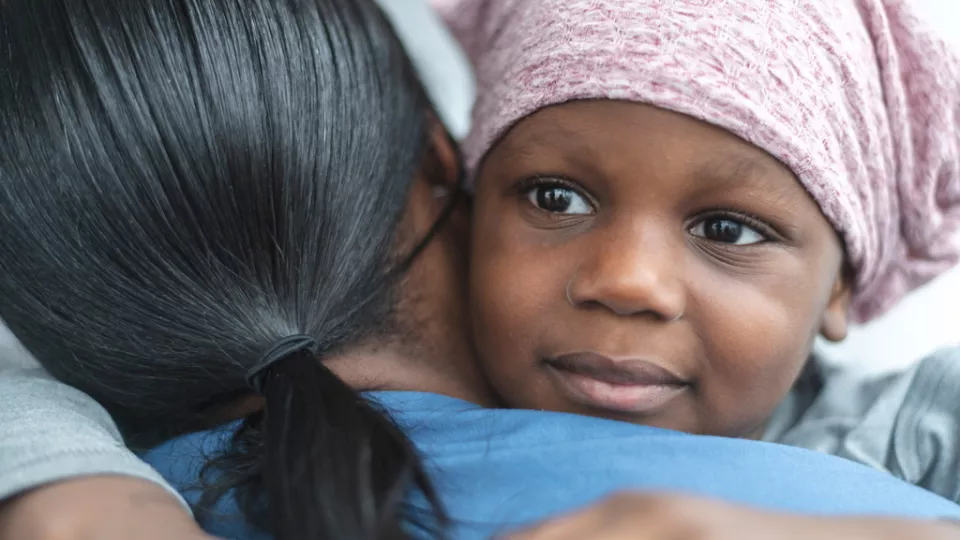
PENTEC: World Experts Team Up to Improve Outcomes for Children After Radiation Therapy
Annually, more than 350,000 children in the world are affected by pediatric cancer. Radiation has improved outcomes dramatically, but the damage caused to healthy tissue can affect the long-term health of a child. While clinicians and radiation specialists design treatments using the most up-to-date information available, there hasn’t been a single guiding source of data to make evidence-based decisions that are specific for children. Now, a volunteer international research collaboration is working toward providing evidence-based guidelines for radiation therapy dosing for children. Results from this effort will help in minimizing side effects while continuing to provide effective radiation therapy.
An introduction to PENTEC—or Pediatric Normal Tissue Effects in the Clinic—was recently published in the International Journal of Radiation Oncology. PENTEC is made up of more than 150 physicians, medical physicists, epidemiologists and other specialists, who volunteer their time and expertise.
“This is really a labor of love,” says Arthur Olch, PhD, a Medical Physicist at Children’s Hospital Los Angeles. “We are all professionals and specialists, but we’re also just people who care about what happens to these kids after their cancers are treated.” In the Cancer and Blood Disease Institute at Children’s Hospital Los Angeles, Dr. Olch works closely with radiation oncologists to help plan radiation therapy treatments and ensure radiation equipment is operating properly. He is also on the steering committee of PENTEC.
PENTEC is organized into 18 research groups, or “task forces,” each of which focuses on how radiation affects a particular organ system—like the lungs and respiratory pathway, or the central nervous system. The group then scours the medical literature for studies and articles that report doses and outcomes. This often means reviewing hundreds of articles. After surveying the literature and compiling information about dosage and outcomes, they can correlate the side effects with the radiation dose to each organ.
“We are collecting a huge amount of information, which allows us to make recommendations about safe dosing to the pediatric radiation oncology community that’s backed by evidence” says Dr. Olch.
But PENTEC’s efforts don’t end there. The team comes across many case studies that don’t include enough information to contribute to the dose response curves. If, for example, a study reports on side effects but doesn’t report on the radiation dose causing those effects, the study cannot be included. PENTEC hopes to change this; they propose reporting standards for future studies so that guidelines can be shaped by as much information as possible.
The specialists who volunteer with PENTEC have been working for several years on compiling enough information to formulate guidelines. This year, organ system task forces have started publishing their findings and recommendations and most should be published by the end of the year.
Dr. Olch believes PENTEC will lead to fewer life-altering side effects and improved quality of life for childhood cancer survivors in the future. “What we are doing has very broad implications,” he says. “This will change the course of pediatric radiation therapy and hopefully lead to better outcomes for children with cancer—not just at Children’s Hospital Los Angeles and in the United States, but worldwide.”
Dr. Olch is Professor of Clinical Radiation and Oncology at the Keck School of Medicine of USC. Kenneth Wong, MD, a physician and researcher in the Cancer and Blood Disease Institute at Children’s Hospital Los Angeles and Associate Professor of Clinical Radiation Oncology at the Keck School of Medicine of USC, is also a contributing researcher for PENTEC, working with the cerebrovascular task force.
About Children's Hospital Los Angeles
Founded in 1901, Children's Hospital Los Angeles is the highest-ranked children’s hospital in California and fifth in the nation on the prestigious U.S. News & World Report Honor Roll of best children’s hospitals. U.S. News ranks Children’s Hospital Los Angeles in all 10 specialty categories. Clinical care at the hospital is led by physicians who are faculty members of the Keck School of Medicine of USC through an affiliation dating from 1932. The hospital also operates the largest pediatric residency training program at a freestanding children’s hospital in the Western United States. The Saban Research Institute of Children’s Hospital Los Angeles is home to all basic, translational, clinical and community research conducted at the hospital, allowing proven discoveries to quickly reach patients. Our mission: to create hope and build healthier futures. To learn more, follow us on Facebook, Instagram, LinkedIn, YouTube and Twitter, and visit our blog at CHLA.org/blog.


